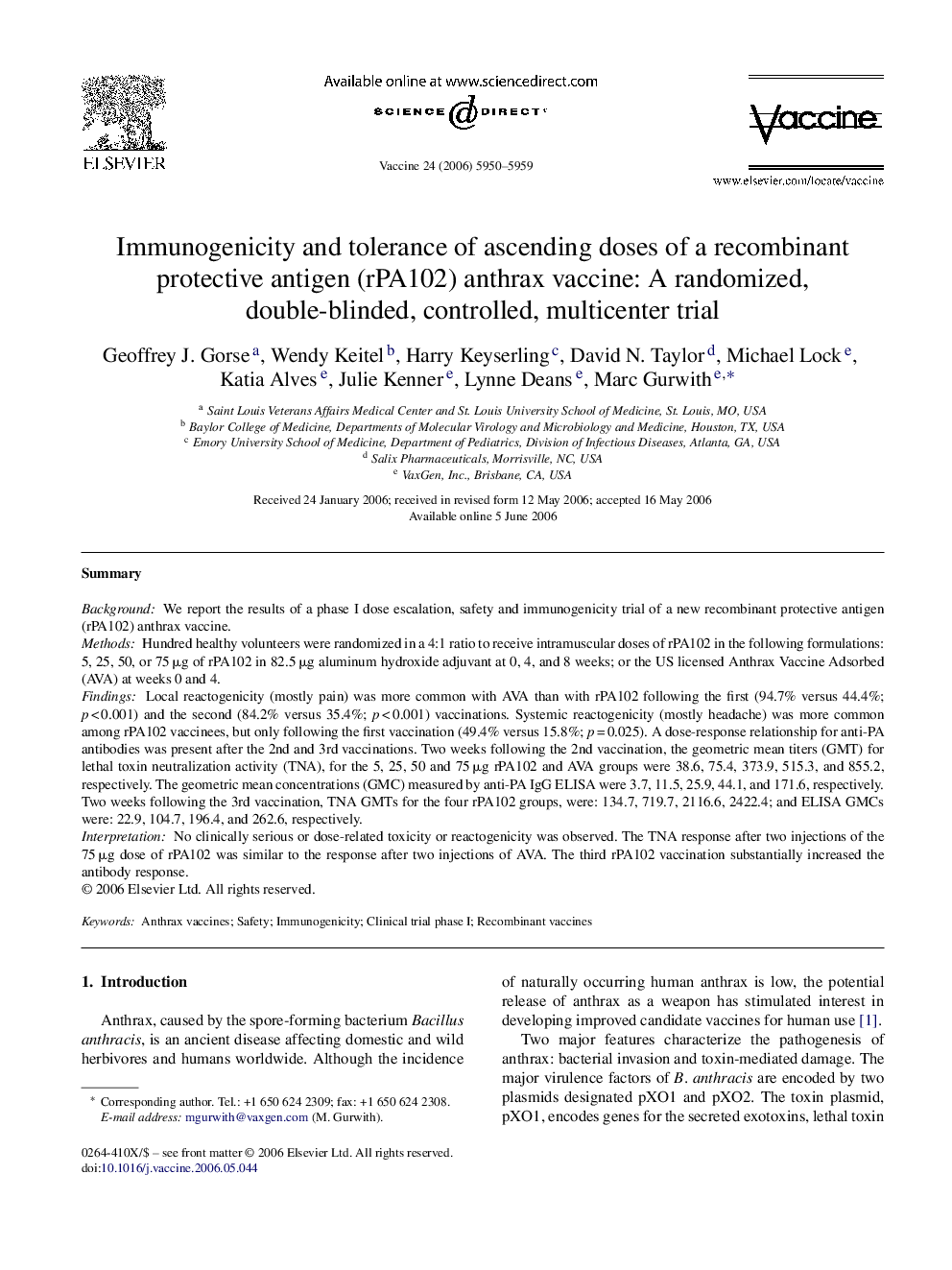| Article ID | Journal | Published Year | Pages | File Type |
|---|---|---|---|---|
| 2407583 | Vaccine | 2006 | 10 Pages |
SummaryBackgroundWe report the results of a phase I dose escalation, safety and immunogenicity trial of a new recombinant protective antigen (rPA102) anthrax vaccine.MethodsHundred healthy volunteers were randomized in a 4:1 ratio to receive intramuscular doses of rPA102 in the following formulations: 5, 25, 50, or 75 μg of rPA102 in 82.5 μg aluminum hydroxide adjuvant at 0, 4, and 8 weeks; or the US licensed Anthrax Vaccine Adsorbed (AVA) at weeks 0 and 4.FindingsLocal reactogenicity (mostly pain) was more common with AVA than with rPA102 following the first (94.7% versus 44.4%; p < 0.001) and the second (84.2% versus 35.4%; p < 0.001) vaccinations. Systemic reactogenicity (mostly headache) was more common among rPA102 vaccinees, but only following the first vaccination (49.4% versus 15.8%; p = 0.025). A dose-response relationship for anti-PA antibodies was present after the 2nd and 3rd vaccinations. Two weeks following the 2nd vaccination, the geometric mean titers (GMT) for lethal toxin neutralization activity (TNA), for the 5, 25, 50 and 75 μg rPA102 and AVA groups were 38.6, 75.4, 373.9, 515.3, and 855.2, respectively. The geometric mean concentrations (GMC) measured by anti-PA IgG ELISA were 3.7, 11.5, 25.9, 44.1, and 171.6, respectively. Two weeks following the 3rd vaccination, TNA GMTs for the four rPA102 groups, were: 134.7, 719.7, 2116.6, 2422.4; and ELISA GMCs were: 22.9, 104.7, 196.4, and 262.6, respectively.InterpretationNo clinically serious or dose-related toxicity or reactogenicity was observed. The TNA response after two injections of the 75 μg dose of rPA102 was similar to the response after two injections of AVA. The third rPA102 vaccination substantially increased the antibody response.
